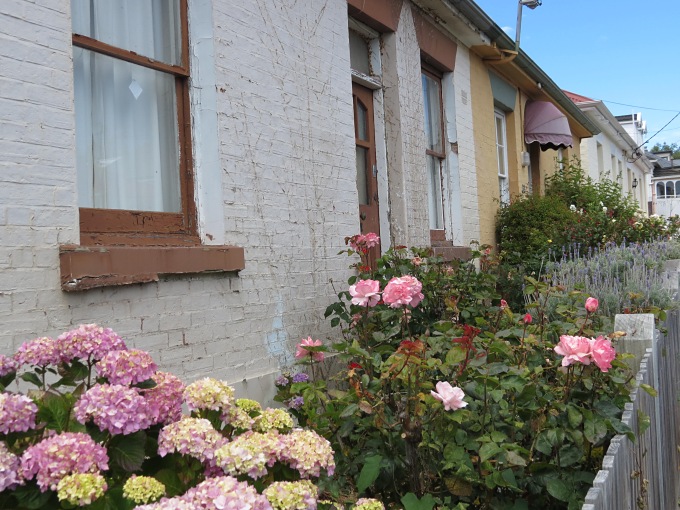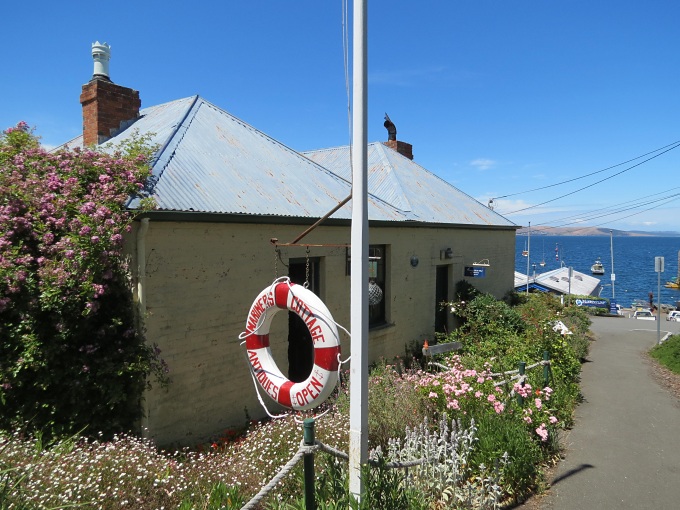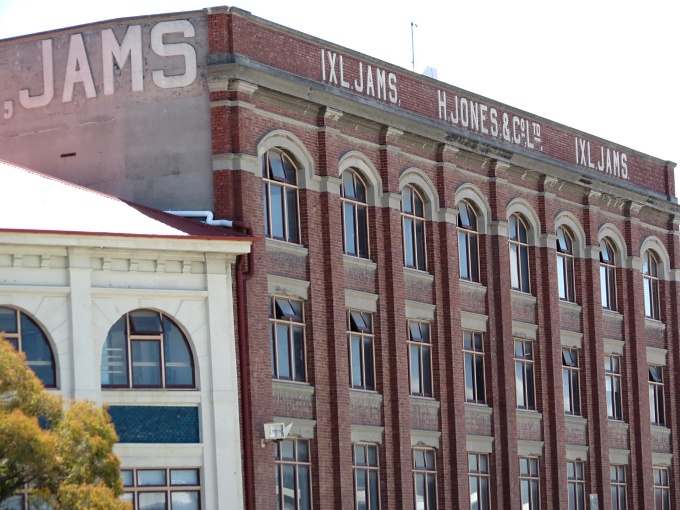Historic Hobart, Tasmania
/ I'm usually lucky coming up with a walk or two that explores a city's nooks and crannies on foot. In Hobart, I struck the mother lode. This is a small city with lots to see and the city fathers are evidently keen on everyone taking advantage of what's available. I found lots of information on the internet about self-guided walking tours including pdf downloads with maps and descriptions of key interest points. I negotiated our play dates with the captain and chose an historical walking tour as our first on-foot foray into the city.
I'm usually lucky coming up with a walk or two that explores a city's nooks and crannies on foot. In Hobart, I struck the mother lode. This is a small city with lots to see and the city fathers are evidently keen on everyone taking advantage of what's available. I found lots of information on the internet about self-guided walking tours including pdf downloads with maps and descriptions of key interest points. I negotiated our play dates with the captain and chose an historical walking tour as our first on-foot foray into the city.
Hobart is the second oldest city in Australia, founded in 1803. Tied up at the Elizabeth Street Pier in Sullivans Cove on the site of the original settlement here in Hobart, we didn't have far to go to begin our tour. Founded as a penal colony, there was no dearth of free labor in Hobart. There was plenty of money from timber and whale oil and there was a large local supply of sandstone, hence the preponderance of huge sandstone buildings in the area … warehouses, government buildings, houses, mansions, walls and arches.
We headed first along the foreshore to Salamanca Place. Now upscale with boutiques and restaurants, this beautiful area is lined with Georgian-style sandstone warehouses, a solid historical reminder that this was originally the docking place for whaling and sealing boats.
Tucked between two warehouses, we found the alley leading to Kelly's Steps. Built by Captain James Kelly in 1839, the steps provide a shortcut from Salamanca up to Battery Point, Hobart's oldest neighborhood.
We wandered up steep hills and down narrow streets past neat, well-preserved period cottages, their tiny front gardens overflowing with hydrangea, roses and lavender. Once in awhile magnificent views of the harbor peeked out between buildings. We walked across the tiny park at Arthur Circus, a circle of Battery Point's oldest houses … and not a clown in sight.
On Hampden Road, we saw one cottage for sale that was an absolute beauty.
“This charming cottage was built in 1840 for Angus McLeod, the Bandmaster of the Royal Scottish Fuseliers. Beautifully built from a blend of sandstone and bluestone, this timeless Georgian classic impresses from every angle.” $1.2M – this would definitely over-extend our current budget.
We stopped at The Shipwright Arms, locally known as Shippie's, for a pub lunch and a pint (more on pubs later) then consulted the map to find a chandlery David had been hankering to see (one of the negotiating points of the walk). The chandlery happens to be near the historic Mariners Cottages, so we killed two birds with one stone. These tiny cottages are believed to be the oldest remaining buildings on the site of the shipbuilding yards on Napoleon Street.
The walk looped around and took us through the Angelsea Barracks grounds. Built in 1814, Angelsea is the oldest Australian Army barracks still in use. We were free to wander the grounds and admire yet more sandstone buildings and convict-built structures.
An old war memorial stands in a separate area, the only Australian war memorial ever erected by soldiers to memorialize their own. On the far side of the lawn, we were surprised to find a pillar left from a Transit of Venus study conducted in 1876 by an American expedition here.
We finished our 5 km walk at the Victoria Docks where fishing vessels berth and tie up to offload their catches. Another row of warehouses line Hunter Street just opposite the waterfront. Previously a merchants row, it subsequently was the home of Henry Jones IXL jam factory in 1891. A little trivia: the “IXL” stood for “I excel in everything I do”, Jones' personal mantra. Still produced today, this iconic jam brand is no longer made in Hobart. However, the “jam factory” building remains, now housing a 5-star hotel and lots of upscale boutiques, shops and restaurants.
Returning to the boat, we felt a bit more in touch with Hobart's historic past and David still had time to brew up his next batch of beer.









